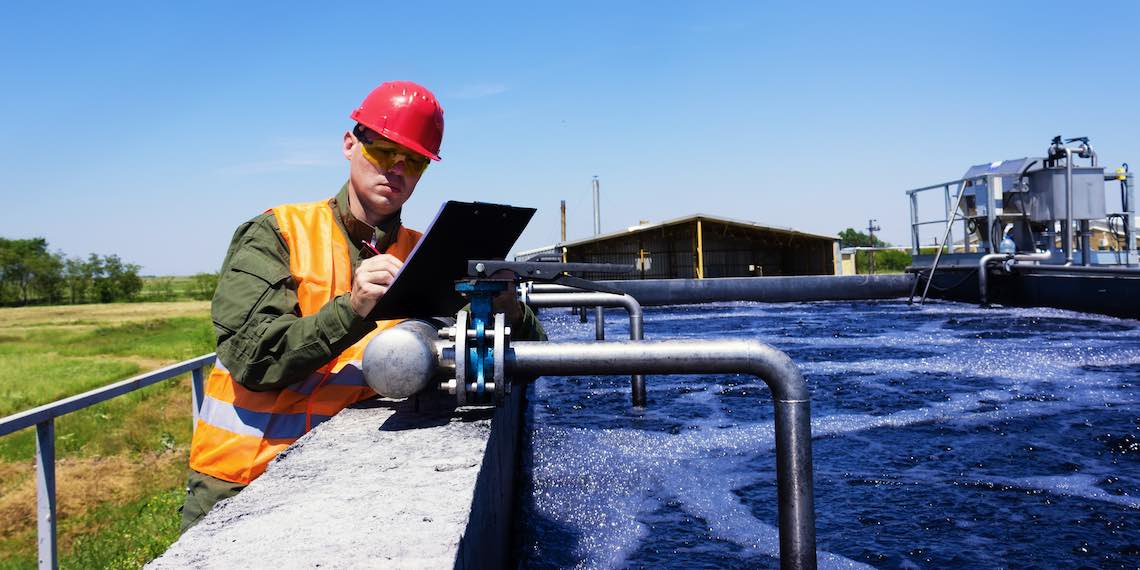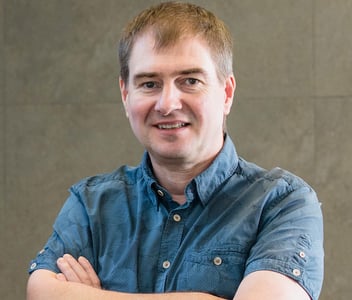Electrodialysis trial saves energy and recovers wastewater nutrients

A trial at Urban Utilities’ Luggage Point Resource Recovery Centre has pioneered an energy-saving technique for extracting nutrients from wastewater via electrodialysis
Spearheaded by Dr Andrew Ward, Advance Queensland Industry Research Fellow at the University of Queensland’s Australian Centre for Water and Environmental Biotechnology, the technique uses an electric current to concentrate and separate nutrient ions from wastewater in a similar process to that used for desalination.
“Instead of everything going down the drain and being treated and going out to sea, a lot of water utilities are looking at how we can envisage this circular economy – a lot of industries are doing that as well. And it's becoming more feasible now to try and recover these nutrients from wastewater or from waste streams,” Ward said.
“Currently, a lot of the methods used for treating wastewater are destructive methods – they're not designed to recover nutrients, they're designed to transform nitrogen to N2 gas and release it to the atmosphere. Very little work in Australia or worldwide has been done on nutrient recovery.”
Ward describes it as a shift in perspective about wastewater from something that requires treatment to an opportunity to recover valuable resources – such as the fertiliser extracted from the electrodialysis process.
“Whether or not we can actually source fertiliser all the time, it's always good to have a backup in case we can't get ships through or [in situations such as] what's happened in Ukraine at the moment,” he explained.
“That is what drove this research: looking for ways to develop fertiliser from waste streams that we have available here in Australia.”
Charged up
The process itself, Ward said, is an electrochemical one.
“We have a series of cationic and anion membranes – so positive and negative membranes – and we have them in stacks. The process involves feeding water into one of the cells, and then on the other side recirculating the concentrate,” he explained.
“Nutrients are basically either anions or cations, and putting a charge across the cell causes them to migrate across the membrane.
“Because the membranes are opposing charges, you'll get a positive ion going across the membrane, then it will hit a membrane that it can't go across.”
Applying the electrochemical process to wastewater rather than saltwater, however, required rethinking the technology due to highly concentrated digestates
“With wastewater, we're dealing with centrates; in the waste activated sludge process, they concentrate bacteria and then anaerobically digest that to get methane, and they're left with this concentrated digestate coming from the digesters, and this is quite a problem for wastewater utilities to deal with, because it's so concentrated,” Ward said.
“There mightn’t be a lot of it, but it's very strong. You can get up to between 1000 and 3000 mg of ammonia in this digestate – or centrate, we call it – whereas your normal wastewater coming into a plant might be 70 mg of ammonia, and so this is a very, very strong wastewater to start with.
“And it's a big problem for utilities to deal with this water coming from the anaerobic digestion process.”
It was one of Ward’s students, Emma Thompson Brewster, who developed the technique to allow the electrodialysis cell to work in this precipitate-heavy environment.
“Emma realised that if we use a struvite crystalliser and precipitate a lot of the phosphorus out – phosphorus is one of the main minerals that causes this scaling – we found that if we actually dissipated either all the magnesium out, all the calcium out or all the phosphorus out, we could actually stop the scaling on the membranes,” Ward said.
“By eliminating that issue, that also was a big breakthrough that made this process quite viable.”
Low power
Another viability concern for retrieving nutrients from wastewater was the amount of energy the system used: if the electrodialysis required too much electricity to operate, it would not be practical for utilities to adopt.
“When you're a water utility, and you've got to treat a lot of water, you're not going to embrace the technology that's going to be more energy intensive than what you're already doing,” Ward said.
“A lot of water utilities are looking for a more efficient way of treating water and to bring their carbon footprint down and their energy consumption down, so they are going to definitely be interested in something that uses less energy than what they're already doing.
“We demonstrated that this nutrient recovery process requires about half the energy used to treat the water through usual processes. So anything we can put through this process is an energy saving for them as far as treatments concerned.
“Not only that, we also produce a fertiliser from it, which is something utilities can turn into a product. So that's another win as well.”
From here, Ward plans to expand the technology, including exploring how to deal with emerging contaminants, pharmaceuticals and colour-removal.
“We are working on scaling this up,looking at the economics behind the scale-up, and also the next stage of what else we can recover through this [electrodialysis] process,” he said.
“It's ongoing, but you would definitely use it at a water treatment facility or anywhere where you've got a high-strength waste stream that you want to get the nutrients out of.”

